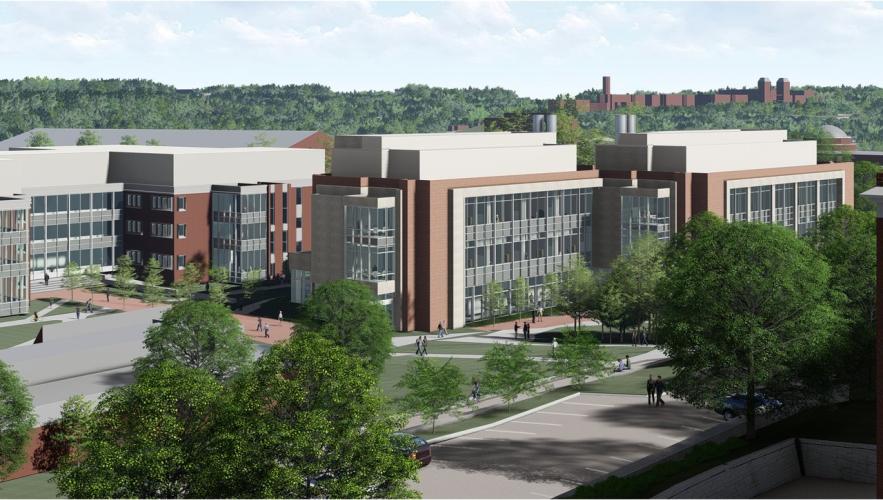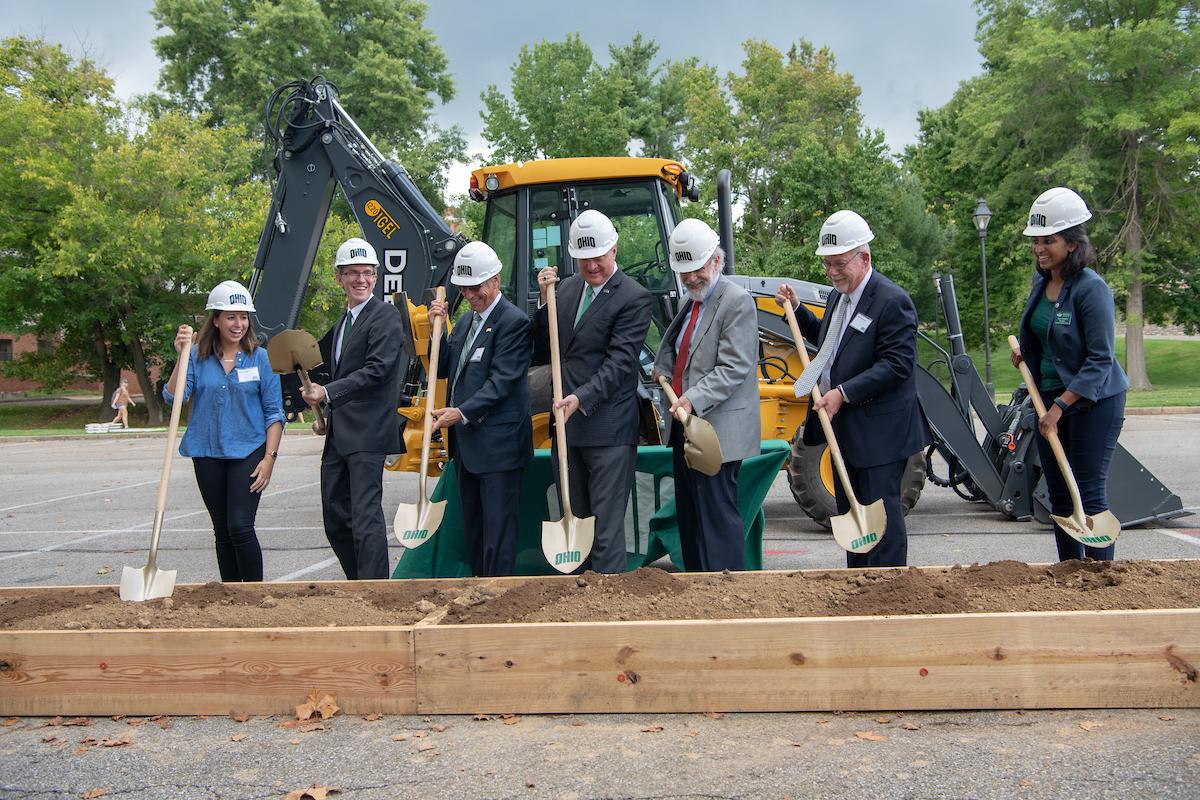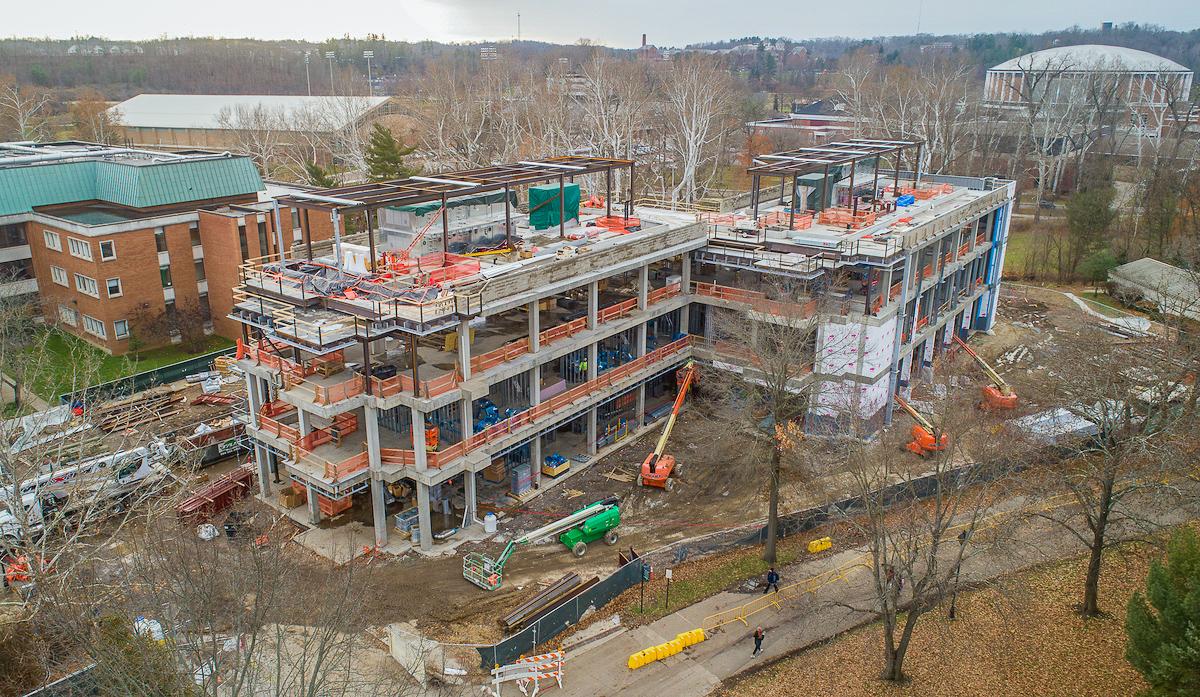
OHIO's new Chemistry Building invests in innovative learning, academic research

Ohio University’s new Chemistry Building, slated to be complete in the summer of 2020, will provide a window into 21st Century discovery, innovation and teaching at a time when the institution is reimagining higher education.
When the original Clippinger Laboratories were dedicated in 1965, they were state-of-the-art facilities for a University that had only about 14,000 students. After more than 50 years of service, the University realized it was time to re-envision the teaching and research space for the Department of Chemistry & Biochemistry.
“This new Chemistry Building will not only provide a 21stCentury learning environment for our students and future leaders, it will enhance instructional innovation and academic research for our faculty and staff,” said OHIO President M. Duane Nellis. “The collaborative learning spaces in this new building will challenge and empower our students to discover, and will provide our educators with the tools to drive local, national and global solutions.”
The new three-story building, which broke ground in August 2018, will have 34,204 square feet of teaching and research space. On the first floor, there will be teaching laboratories, major instrumentation space and collaborative learning spaces. All of the teaching laboratories on the first floor will be devoted to upper division classes, such as organic chemistry or analytical chemistry. Starting in the fall of 2020, upper division classes will be taught in the new building.

“The new and enlarged collaborative learning spaces will provide more spaces for group learning,” said Dr. Stephen C. Bergmeier, professor and chair of Chemistry & Biochemistry. “From the modern new laboratory spaces to our ability to put science on display, this new building will transform how students learn chemistry and science in general.”
The new building’s first floor will provide expanded spaces for active learning experiences such as the Peer Led Team Learning classes in which students meet to work through challenging problems with the help of a student who has successfully completed the class. This intensive learning class requires small groups working in informal spaces. Additionally, the new modern layout of the teaching laboratories is designed to be more engaging and to provide enhanced opportunities for active learning and group work.
Other new features, such as the the open nuclear magnetic resonance (NMR) laboratory, will help bring science to everyone visiting the new building. The open NMR laboratory will provide a great “window” into science as students and visitors to the building see the modern instrumentation at work along with the students carrying out the experiments. The modern forensic chemistry laboratory will provide improved and modern facilities to help students prepare for in-demand careers in forensic labs.
“Also notable is the biochemistry teaching laboratory,” said Dr. Bergmeier, “which will provide the department’s first dedicated biochemistry teaching space.”

Construction of the building is scheduled to be complete by June 2020 with teaching and research labs relocating to the new building during the summer of 2020.
Architects, planners, faculty and staff have all been involved in the discussions to develop an exciting new facility for chemistry. The new Chemistry Building is considered phase one of the Clippinger Renovation Project. Phases two and three will follow in Clippinger as space is available to shift labs, offices and classrooms into the new building.
For construction updates on the Chemistry Building and for giving opportunities, please visit this website.
